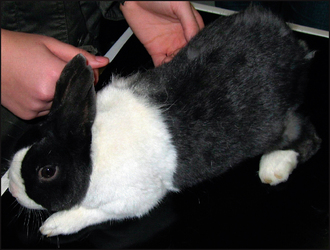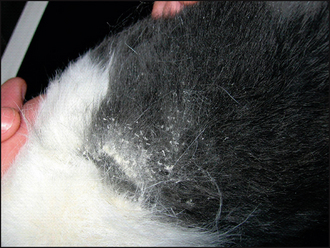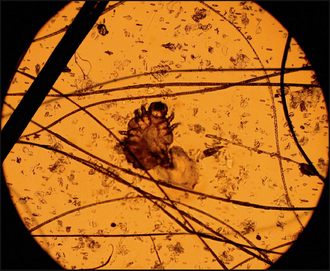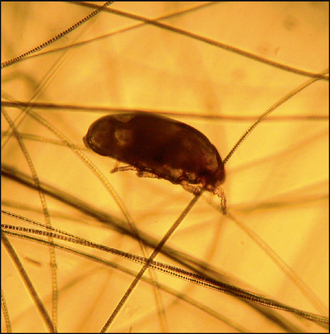16 Cheyletiellosis in a rabbit
CASE HISTORY
The relevant case history in this case was:
CLINICAL EXAMINATION
The dermatological examination in this case confirmed an area of marked scaling dorsally between the scapulae, although there was also mild scaling extending caudally along the dorsal midline of the back (Figs 16.1 and 16.2). The skin in these areas was mildly erythematous and there was thinning of the coat in the worst affected area.
CASE WORK-UP
Acetate tape strips: The rabbit was gently restrained and two acetate tape strips were taken from the area of dorsal scale. These were mounted on a microscope slide and examined under the low-power objective (×40 magnification). Mites are found in greatest numbers over the scapulae, but may also be encountered on the back of the head, the neck and rarely on the caudal abdomen. Cheyletiella mites are typically saddle shaped with hook-shaped mouth parts and are easily seen using the described technique (Figs 16.3 and 16.4). Specific identification of the mite is not required in practice, and the vast majority found on rabbits will be C. parasitovorax.
Dermatophyte culture: Dermatophyte culture may be carried out if multiple evaluations for ectoparasites were negative. Trichophyton mentagrophytes is common in outdoor rabbits, whereas Microsporum canis and M. gypseum are more common in pet and house rabbits. The presenting signs and the demonstration of Cheyletiella mites in the scurf made dermatophytosis unlikely in this case.
Stay updated, free articles. Join our Telegram channel

Full access? Get Clinical Tree






